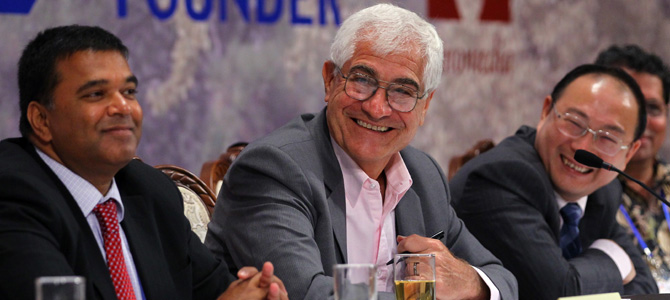

For the large, usually hard-to-change, clumsy-in-reaction State-owned enterprises, the capricious business environment since 2008 has been difficult.
Most of China's largest SOEs were established in the 1950s and 1960s. Now directly overseen by the State Assets Supervision and Administration Commission, 117 SOEs are at the "central level".
They cover industries such as energy, aviation, telecom and construction, each playing a pivotal role in the nation's development. And 38 of the 117 "central SOEs" are now on the Fortune 500 list, compared with 10 in 2005.
Wang Yong, the minister of SASAC, said the SOEs could take a still-larger share in the global market.
Wang also said SOEs will depend on innovation, management and business strategic planning for their growth.
However, since 2008, the global slowdown has been threatening the profit of most of these large corporations.
In the first five months of 2012, central SOEs generated 580.7 billion yuan ($91.3 billion) in profits, a decline of 7.8 percent year-on-year, according to the Ministry of Finance.
SASAC officials admitted that rising costs in energy supply, raw materials, and credit, along with foreign investors' sagging confidence, will make 2012 a tough year for the SOEs.
Earlier this year, SASAC asked SOEs to offset the effects of the global economic slowdown by speeding up their "strategic transformation" and technological upgrading.
Not all SOEs have been making equal progress since. But some have been using the time as an opportunity to learn - as to how to leverage their advantages, tap their potentials, and adapt to the new market environment.
In the process, they have increased their value, like China Power Investment Corp, or expanded collaboration with overseas partners, like China Huadian Corp.
In the resource-rich Huolin Gol in the Inner Mongolian autonomous region, China Power Investment, one of China's top five power generating corporations, is building one of China's largest electrolytic-aluminum bases near its gigantic pithead power plant.
Production of electrolytic aluminum is long considered a high power-consuming and high-pollution industry. If it were placed elsewhere, government approval would be difficult to get.
But for Lu Qizhou, general manager of China Power Investment, it is exactly to the company's advantage. Thermal power industry has been operating at a continuous loss because of rising coal prices and State control of electricity prices.
By integrating its pithead power plant with the higher value-added aluminum production, putting the power plant near the coal mine, and putting the aluminum production near the power plant, China Power Investment has found a new model of growth without having to wait for the government to raise the price of electricity.


 Washington to remain focused on Asia-Pacific
Washington to remain focused on Asia-Pacific RQFII target blue chips amid bear market
RQFII target blue chips amid bear market Australian recall for top two exporters
Australian recall for top two exporters China fears new car restrictions
China fears new car restrictions